A Brief and Tasty History of the Beef Pasty
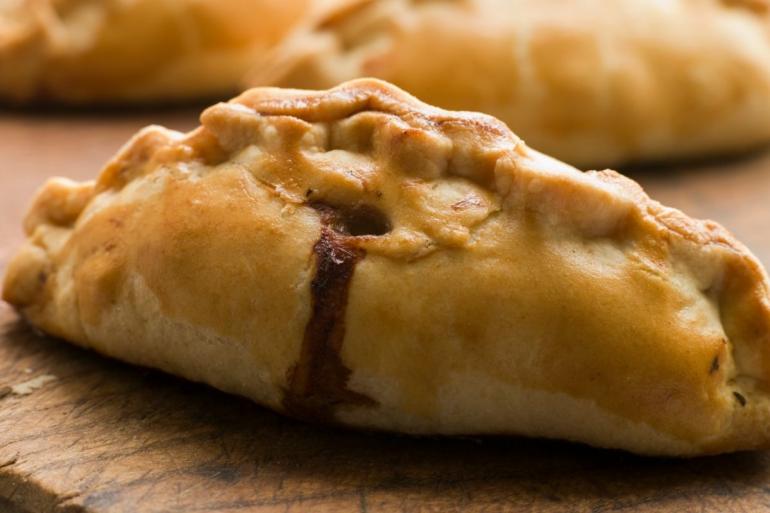
By the mid-19th century, the mining industry in Cornwall, England, was in dire straits. The area, once rich in copper, was nearly mined out, and mining was the principal Cornish occupation. Then the coup de grace came: enormous loads of copper were discovered in the New World, in places like Michigan and New Mexico. Places that, to a Cornish miner, must have seemed as strange and distant as Timbuktu. Then, in 1882, after semi-successful attempts at mining silver and gold, folks in Butte, Montana discovered that they were sitting on “the richest hill on Earth.” Within five years, Butte was producing more copper than anywhere else in the United States. The Cornish, rightly regarded as some of the finest hard-rock miners in the world, considered the prospects of seeking employment in Butte.
Cornish miners were known as Cousin Jacks, some say because they were always asking their cousins where they could find a job, and Jack was both a popular name at the time as well as a nickname for any Englishman, not unlike “average Joe” in America. Cousin Jacks moved to Butte in droves—but not just the Cornish. They were accompanied, famously, by the Irish, who would leave their own mark on Butte’s history that is more than evident today.
But those first Cornish miners brought with them a delicacy that many Montanans still treasure, a simple hand-pie that continues to nourish and fuel hard-working folks today.
As William A. Burke, author of the classic Copper Camp: The Lusty Story of Butte, Montana, the Richest Hill on Earth, writes, “each nationality brought its favorite dish from the old country and through fraternization between nationalities, many of them were soon adopted by the entire community. The best example is that epicurean masterpiece of pie crust, beef and vegetables which Butte, with pardonable pride, claims as its very own—the Cousin Jack pasty.”
He continues, with toothsome description, to say that “[t]he pasty, as prepared here, is beyond description in mere words...it is both a thing of beauty and nourishment to body and soul. No earthly mortal could delineate for a moment on its delights without waxing eloquent.”
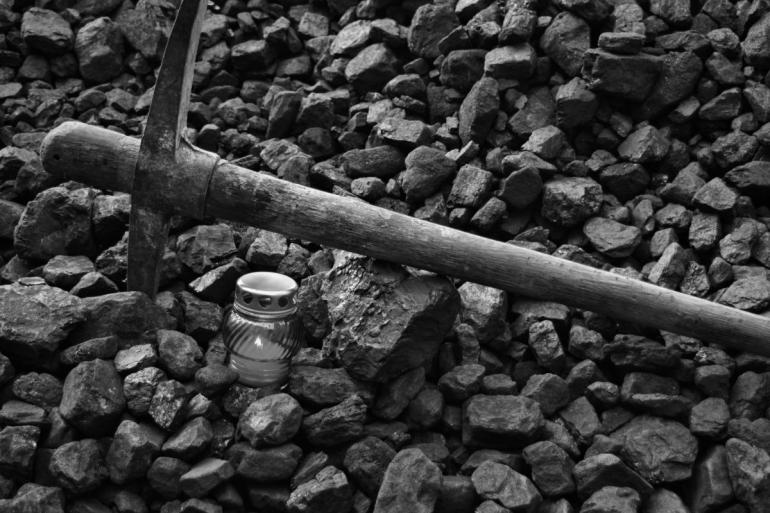
The Cornish can’t lay claim to having invented the pasty—indeed, the first mention of the savory hand-pie is in Geoffrey Chaucer’s Canterbury Tales, and the treat, filled with venison, was a particular favorite in the court of Henry VIII. But the Cousin Jack variety, out of which evolved the modern Butte variant, is as Cornish as cream tea, figgy ’obbin, or whortleberry pie.
The traditional pasty, still enjoyed in Cornwall to this day, would have contained diced beefsteak and rutabaga, called “swede” in England. Perhaps this is one of the innovations on the formula introduced by Butte’s Irish population—over here, potatoes (Irish potatoes) are much preferred. Burke adds that there is one more ingredient: “a breathed prayer or two...”
The advantage of the pasty to Butte’s working class went beyond a simple taste of home. The hand-pies were very portable, easy to tote in a tin lunch pail, relatively easy to make, and they stayed warm for hours. Should they get cold in the depths of the mine, all you had to do was put one in your shovel and heat the shovel over coals or a fire. However, you did have to remember that you were doing so—apparently, they were the cause of a fire at least once in the history of American mining when, left unattended, a pasty overloaded with combustible lard and suet burst into flame. Of course, this wasn’t likely to happen, as the average miner eyed their pasty closely, snatching it when it was warm enough to eat. And there are some, including the aforementioned William A. Burke, who say that “[s]erved cold as a midnight snack, or at luncheon, a pasty always speaks for itself.”
In the poorly lit depths of Butte’s copper mines, one pasty looked a lot like another. Naturally, it then became a problem of identification—which pasty is mine? To that end, the miners’ wives would often scratch their husband’s initials into the crust, sometimes on both ends, lest someone eat half of their pasty and set it aside. And while many American pasties today are not made with a crimped ridge like a pie crust, the historical Cornish Jack pasty usually was. This way, the miner, whose hands were black with soot, or worse, arsenic, had a convenient handle to hold the pasty by. Others maintain that the Cornish, occasionally given to superstition, would “sacrifice” the crimped handle as an offering to the hungry ghosts and goblins that live in the caverns of the earth.
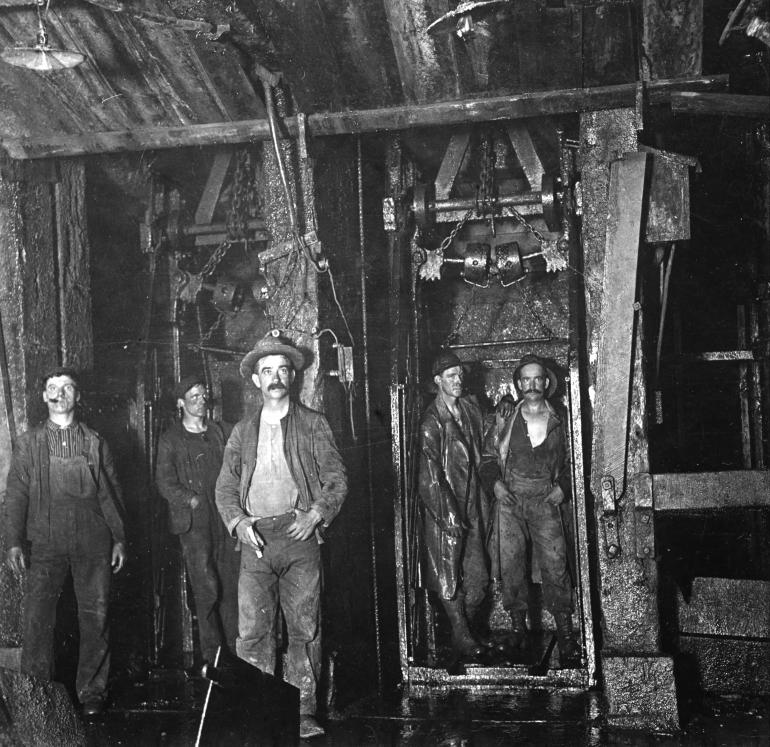
Still others, like the Cornish food historian Glyn Hughes, say that the notion of the crimped edge being a handle is hogwash. He told the host of a popular English television program, “We’ve been back through literally thousands and thousands of newspapers and magazines going back to the 18th century and we can find absolutely no mention of it anywhere.” Instead, he maintains, miners were more likely to eat their pasties out of cloth bags brought for that purpose.
It might be noted that another major difference between the Irish pasty and the English version is that while the English one contains cubed beef, the Irish one contains sliced beef. In this way the Irish managed to distinguish themselves from their hated ancestral enemies, the English.
Today there are many places to get a pasty in Butte. There’s Joe’s Pasty Shop, Nancy’s Pasty Shop, Truzzolino Tamales, and Gamer’s Cafe, which serves a famously massive version absolutely smothered in gravy. And of course, no survey of the modern Western American pasty could possibly exclude Wind’s Pasties, made in Anaconda, Montana, but available in hundreds of locations through Montana, Washington, Idaho, and Oregon.
We’ll close with more pretty words from William A. Burke, the poet of the pasty:
“That is all there is to it. Sounds simple—but in the hands of the inept—or if sufficient prayers are forgotten—the result might turn out to be but a soggy mess. Expertly handled, however, the finished product is something to cause the true gourmet to contemplate on thoughts, ethereal and otherworldly. A real pasty does those things to a human.”
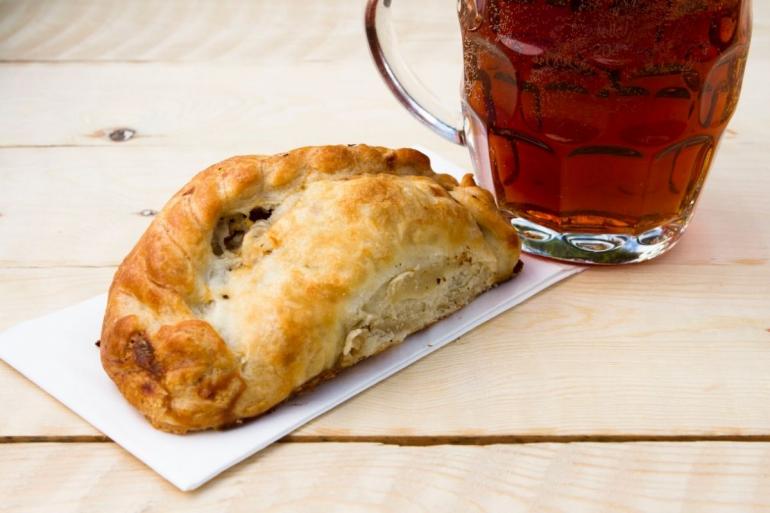
Recipe for Cornish Pasties
Filling: skirt or flank steak, or loin tip, potatoes, onions, salt and pepper
Pastry: 3 cups flour, 2 cups lard, 1 teaspoon salt (added to flour), water or milk
Cut lard into flour. Add only enough water to make pastry stick together. Roll out rounds to size desired for each pasty.
Begin by layering sliced potatoes on half the round, then sliced onion, salt and pepper to taste; next a layer of meat (sliced or diced) and more salt and pepper; add another layer of potatoes, then onions, more salt and pepper and top with a pat of butter. Pull dough over and up, gathering and crimping across the top and dampening the dough to seal. Make a vent in the top. Brush pasties with a mixture of 1 egg yolk and 1 tablespoon water before baking. This seals in the juice and gives the pasties a golden brown color. Pasties made with lard might otherwise be white after baking. Bake at 400 degrees for 15 minutes, then at 325 degrees for 1 hour.
Melt 1 teaspoon butter with 1 tablespoon water and pour twice in vent during last 15 minutes of baking.
From the Butte Heritage Cookbook, used with permission courtesy of the Butte Silver Bow Arts Foundation. Recipe donated by Mrs. Betty Aultman.
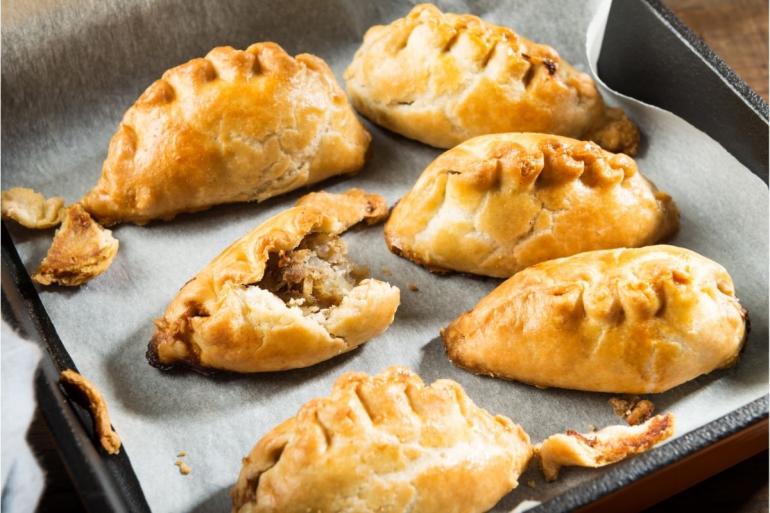


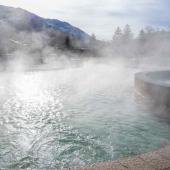
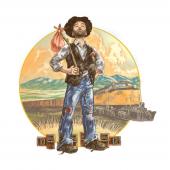

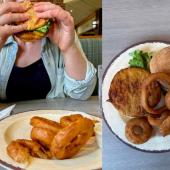
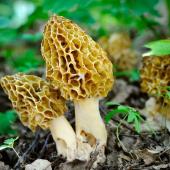


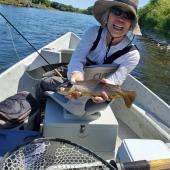
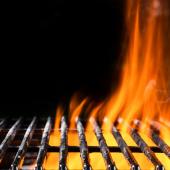
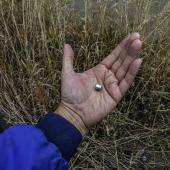
- Reply
Permalink